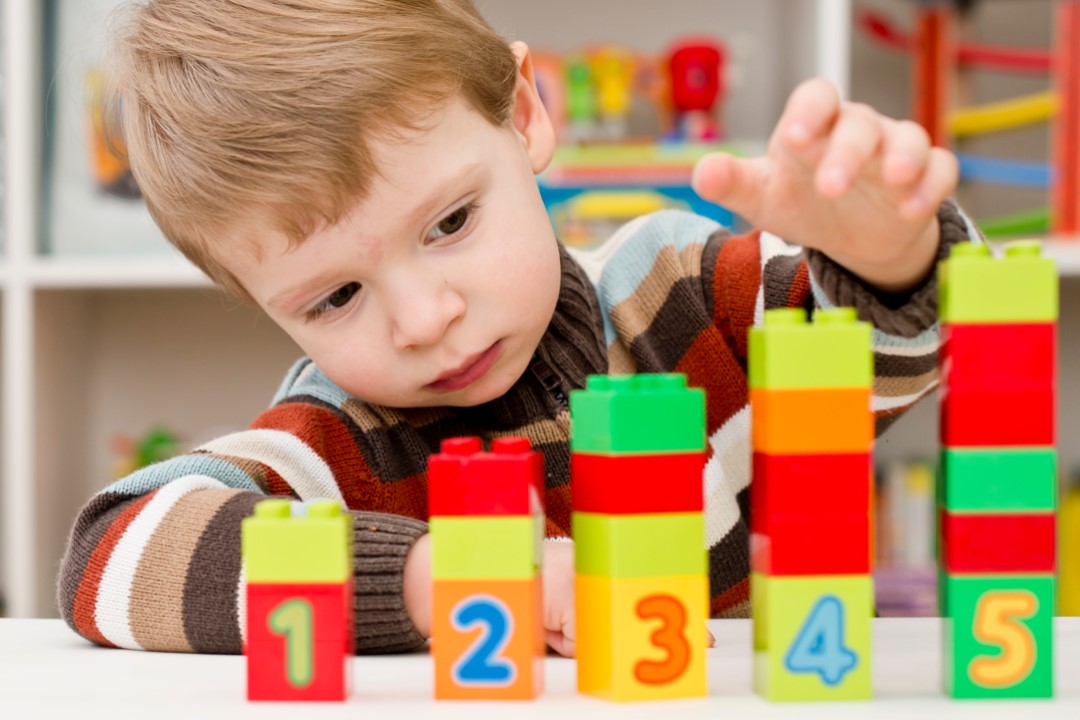Exploring comparison in Early Years
What is comparison? And how can we help children develop a secure understanding of this mathematical concept?
21/06/2023

Teachers and parents of young children may be familiar with the broken biscuit dilemma: a child is frustrated that someone else has more snacks than them, when in fact they both have one biscuit each, except one was snapped in the packet! Children from as young as six months old are sensitive to changes in quantities, but how can we develop these skills as children enter Early Years? In this feature we look at the progression in Early Years comparison.
What is comparison?
Items can be compared according to various attributes, such as length, area, volume or weight. Sets of objects can be compared according to their numerosity. This means identifying which set has more than, or fewer, than the other, or whether they contain the same quantity. Similarly, numbers can be compared according to their relative size; a number can be greater than, less than, or equal to another.
Why teach comparison?
Being able to compare or order a set of numbers is something that pupils will need to do throughout their education. Understanding equivalence forms the basis for later work on balancing equations in algebra. It is important for pupils to decide when numbers are not equivalent, and this is done by making comparisons.
How can children compare sets?
Children should learn to compare quantities before they compare the abstract numbers which represent them. It is easier to compare sets when there is a big difference in the number of objects. Children will do this by perceptually judging which has more. Just by looking, children will notice that Big Bear has more apples than Little Bear, and Little Bear has fewer apples than Big Bear.
Once children are confident, we move on to comparing two quantities that have a smaller difference between them. Children may be able to subitise the number of objects, or they may compare by matching or counting. If children match the apples 1-1, they will see that Big Bear has one left over and therefore has more. Counting and comparing both sets requires a secure understanding of cardinality, and knowing that later counting numbers are worth more:
‘One, two, three. Little Bear has three apples.’
‘One, two, three, four. Big Bear has four apples.’
‘Little Bear has fewer apples than Big Bear.’
‘Big Bear has more apples than Little Bear.’
It is important for children to verbalise the comparisons they make with a focus on accurate use of language. The language of 'fewer than' should be used when comparing countable sets of objects. 'Less than' should be used when comparing numbers or measures, for example, 'This smaller jug holds less water than the larger jug.' or ‘One is less than three.’
Focusing on numerosity
By varying one attribute of the objects we use, such as colour or size, we draw attention to numerosity as the focus for comparison.
We could use a puppet to provoke mathematical discussion. The puppet could suggest that Pat has more teddies than Sam, because his bears are bigger. Discussing with children why they agree or disagree uncovers misconceptions and deepens their own understanding. Counting or matching both sets would reveal that the puppet was wrong. When comparing quantities, the size of the object is irrelevant: bigger objects take up more space, but it does not mean there are 'more' of them.
Similarly, sets with items spread far apart do not always contain more.
Real-life contexts
There are many opportunities for children to match real-world objects and make comparisons in their everyday routines. For example, sharing snacks and toys, or voting for a class story.
Adults working alongside children should look for opportunities to engage them in discussion to deepen their mathematical thinking: ‘Do you have enough?’ ‘How many more do you need?’ ‘Who has the fewest toys?’ ‘Puppet thinks that we have enough toys for everyone, what mistake has he made?’
Stem sentences are a great way of supporting use of the correct language and developing fluency: ‘Arthur has more marbles than Olivia. Olivia has fewer marbles than Arthur.’ Describing comparison in both ways draws attention to mathematical relationships; if we know who has more, we also know who has fewer.
Comparing numbers and reasoning
Children also develop a sense of the relative size of numbers by learning about their position in the number system. There are several ways of exploring this with children:
The staircase pattern created when the Numberblocks stand in order illustrates that each number is composed of one more than the previous number, and one less than the next number. It helps children see the relative position of numbers, e.g. 8 is quite a long way from 3, but quite close to 10.
Singing number rhymes such as Five speckled frogs supports children to recognise that if one is taken away, they will have the previous number, and vice versa.
Many teachers find that playing numbered track games also helps to develop children’s understanding of the sequence of numbers. The further away a number is, the more moves it will take to reach.
Want to learn more?
- Check out the Early Years section of our website.
- Speak to your local Maths Hub about signing up for the Early Years Specialist Knowledge for Teaching Maths Programme and the Mastering Number Programme.
- Read our features Cardinality and number sense and Exploring the composition of number.





